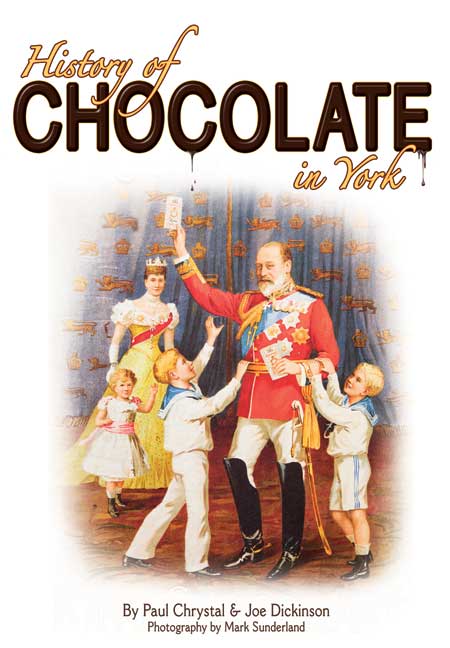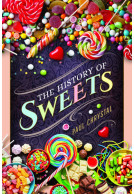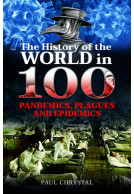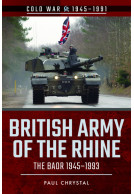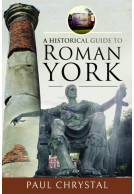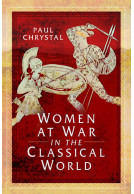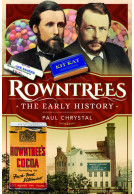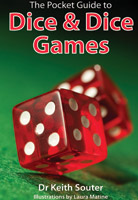A History of Chocolate in York (ePub)
Imprint: Remember When
File Size: 41.9 MB (.epub)
Pages: 236
ISBN: 9781781597491
Published: 29th February 2012
Think of York and you think of its Minster, mediaeval streets, the railways - and of confectionery, particularly chocolate. Kit Kat, Fruit Gums, All Gold, Butterkist have all been as much a part of British life as the York companies that made them: Rowntree’s, Terry’s and Craven’s.
This new book is the first to chart the history of chocolate and confectionery manufacture and marketing by York companies, from their origins in the eighteenth century, through to the recent takeovers by Nestlé, Tangerine and Kraft.
Revolutionary new products such as Easter eggs in the 1870s and chocolate assortments in the 1890s are covered along with such crucial turn of the century developments as milk chocolate and the chocolate bar. The significance to the industry of the Quaker movement is discussed along with an examination of the impact of the world wars and the intervening depression.
The book is fully illustrated throughout, depicting all aspects of production, quality control, distribution and marketing: the packaging, design and branding developed by the companies broke new ground in branding and became an art form in itself with iconic images that still resonate today.
The book is intended for anyone interested in social history and the history of the food industry in Britain, the Quaker movement and social reform and manufacturing and marketing history; residents of and visitors to York will find in the book a fascinating glimpse of an integral part of York’s past, present and future.
The book is rich in detail about the history of chocolate manufacturing, from the time the commodity first reached England to the resent. It features the model village of New Earswick that Joseph Rowntree built for his workers, and the role of the Quakers in the industry. The Rowntree company had its own journal, the fascinatingly-titled Cocoa Works Magazine which was produced from 1902 to 1986.
Picture Postcard Monthly, July 2012
Despite its title, the book tells the story of many well-known British chocolate manufacturers, such as Fry and Cadbury, in addition to the York-based Terry and Rowntree companies. Its authors are the perfect people to write such a book; Dickinson- a collector of chocolate memorabilia – worked at Rowntree for 45 years, while Chrystal is an expert on the Religious Society of Friends (Quakers), of which many of the chocolate families were members. Although these firms have been taken over by multi-nationals, it’s heartening to see how their new owners are proud of the city’s chocolate heritage, funding the newly opened York’s Sweet Story museum.
Best of British, June 2012
Read it for: A well-illustrated history of the chocolate industry in York.
Your Family Tree, July 2012
This highly illustrated book describes in detail the development of York’s confectionary industry including the impact of two World Wars and intervening depression.
Chocolate Festival magazine
The patriotism of early chocolate advertising is charming, harking back to a simpler age, before multi-nationals and global marketing strategies. Particularly fascinating are Chrystal’s insights into the Quaker movement that dominated the British chocolate industry for over a century with Cadbury in Birmingham, Fry’s in Bristol and Rowntree’s in York.
This new publication is the first to chart the history of chocolate and confectionary manufacturing by York companies, and the social reform of the Quaker movement the founding fathers of chocolate in York.
Yorkshire Post 02/04/2012
Fully illustrated this 140 page paperback is full of fascinating information on how employees looked after their staff to the products they produced from chocolate to fruit gums. When was the first KIT KAT produced? Travel back in time using the chocolate chronology section and find when your favourite treat started production.
There are lots of interesting nuggets in the book - for instance, the shape of the Toblerone bar wasn’t based on the shape of the Alps, as is commonly believed (the real reason is much more interesting than that). Albert Einstein also gets a mention for a small but significant contribution he made to the story of chocolate.
Hello Yorkshire Blog
Paul Chrystal has written an immensely readable account of York’s involvement in the confectionery industry. It is packed with detail and plenty of facts - but they are presented in a digestible way. It’s not a book for merely dipping into and removing the odd dainty morsel from the bottom tray. This reader was carried along and devoured the whole story in just a few sittings.
The book is superbly and lavishly illustrated: lots of healthy and appealing dairy maids and rosy-cheeked cherubic children fill the early advertisements and hoardings. Much of the marketing material has been drawn from Joe Dickinson’s own collection - and indeed Joe has contributed a chapter of his own about his “mini-museum”.
With chapters on chocolate and its production in both World Wars; the twenties and thirties; the post-war period; aspects of marketing; Rowntree’s internal staff journal (Cocoa Works Magazine); Rowntree’s model village at New Earswick; and many other aspects of the industry, The History of Chocolate in York provides a comprehensive overview on chocolate and confectionery manufacture in York and beyond.
In his entertaining and sumptuously-illustrated forthcoming book History of Chocolate in York, local author Paul Chrystal describes how in 1579, English sailors who seized a Spanish ship threw a cargo of chocolate overboard after describing it as “sheep dung”
York Evening Press, 20 Feb 2012
There is a great deal about the history of Rowntree’s in this book, as you’d expect, including a short chapter written by Joe Dickinson- a Rowntree’s worker for 40 years, Paul says, who has built up an unrivalled collection of Rowntree’s artefacts and memorabilia.
About Paul Chrystal
Paul Chrystal has been history advisor to York visitor attractions, writing features for national newspapers, and broadcasting on BBC local radio, on Radio 4’s PM programme and on the BBC World Service.
He is contributor to a number of history and archaeology magazines and writes features for national newspapers. He is author of the best-selling A History of Britain in 100 Objects (2022). His books have been translated into Chinese and Japanese.
He is author of Factory Girls: The Working Lives of Women and Children published by Pen & Sword in 2022.







